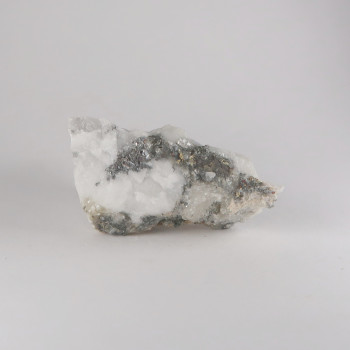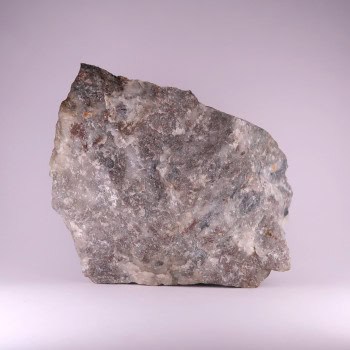Cassiterite
Cassiterite is a tin oxide mineral that has been the main Tin ore throughout recorded history.
Arguably speaking, some of the most important ages in history have been borne on the back of Cassiterite smelting.
It is occasionally used as a gemstone or as a mineral specimen, as well as its use as an ore.
Showing all 3 results
-

Cassiterite from La Fregeneda, Spain
Price range: £7.50 through £10.00 -
Updated

Cassiterite from Roselidden mine, Cornwall
£2.50 -

Cassiterite from Trevarthian Downs Mine, Cornwall
£10.00
Appearance, Uses and History
Cassiterite has a long, storied, and sometimes bloodied history.
To understand it, we must understand Tin. Tin is a metallic chemical element with the symbol Sn. It is a silvery-grey metal that is soft, ductile, and has a low melting point to boot.
Tin is the metal that brought about the Bronze age – Bronze is an alloy of Copper and Tin. Adding Tin made the Copper harder, easier to melt, and flowed better into moulds – this meant weaponry, artwork, and other tools could be made that would outperform copper or stone tools.
Tin is also used in several other things that have been instrumental in building the modern world.
The first is pewter, which is not commonly used nowadays outside of jewellery, but in the past was an important metal for producing plates, cups, and bowls – before the widespread manufacture of ceramics largely overtook its use.
Tin is used in electronics solder – so the device you’re reading this on almost certainly contains Tin. In the past, most solders were 60/40 Tin/Lead, but in recent years lead solders have been largely phased out in the EU and replaced by ‘SAC’ solders, Sn-Ag-Cu, or Tin, Silver, and Copper.
Tin foil was once exactly that – foil made of Tin. It is relatively non-toxic and was used to wrap foods, although it has been almost entirely superseded by aluminium foils. Tin cans are made of steel, but sometimes do contain a thin coating of Tin to avoid rusting.
So, Tin helped to birth the Bronze age and various pieces of modern history, especially where electronics are concerned.
Sadly, the demand for Tin has caused problems in some areas, leading Cassiterite to be considered a conflict mineral. Mining has played a huge role in the continuing wars, massacres and atrocities in the Democratic Republic of Congo (DRC). While blood diamonds are significantly more well known, blood minerals were always a huge problem too.
Mines in Indonesia have had serious issues too – not just human rights and safety concerns but massive pollution problems.
For this reason, I only stock Cassiterite specimens mined or found in the UK, relics of our bygone tin mining industries. Under American SEC rules, these minerals seem to be still considered 3TG conflict minerals, despite being found in the UK in old mine tailings.
Locales
The current largest producers of Cassiterite are China, Indonesia, Malaysia, Peru, Bolivia, Brazil and Thailand.
However, large deposits also exist in other countries. Cornwall in the UK is dotted with mines and ruins from the Cornish tin industry, which once supplied the world.
Mineralogy
Photos of Cassiterite
Hazards and Warnings
Almost all rocks, minerals (and, frankly, almost all other substances on earth) can produce toxic dust when cutting, which can cause serious respiratory conditions including silicosis.
Cassiterite is considered relatively non-toxic, but repeated exposure may cause a condition called Stannosis. Further information on the toxicity of tin oxides can be found here.
When cutting or polishing rocks, minerals, shells, etc, all work should be done wet to minimise the dust, and a suitable respirator or extraction system should be used.
Translations
Arabic:
- حجر القصدير
Hindi:
- कैसिटराइट
Portuguese:
- cassiterita
Bengali:
- ক্যাসিটারাইট
Indonesian:
- kasiterit
Punjabi:
English:
- cassiterite
- ‘wood tin’
Italian:
Russian:
- касситерит
French:
- cassitérite
Japanese:
- 錫石
Spanish:
- casiterita
German:
- Kassiterit
Korean:
- 카시테라이트
Thai:
- แคสสิไรต์
Gujurati:
- કેસિટેરાઇટ
Mandarin and Traditional Chinese:
- 锡石
- 錫石
Urdu:
Further Reading / External Links
- https://geology.com/minerals/cassiterite.shtml
- https://www.minerals.net/mineral/cassiterite.aspx
- http://webmineral.com/data/Cassiterite.shtml
- https://www.gemsociety.org/article/cassiterite-jewelry-and-gemstone-information/
- https://www.mindat.org/min-917.html
- https://en.wikipedia.org/wiki/Cassiterite






